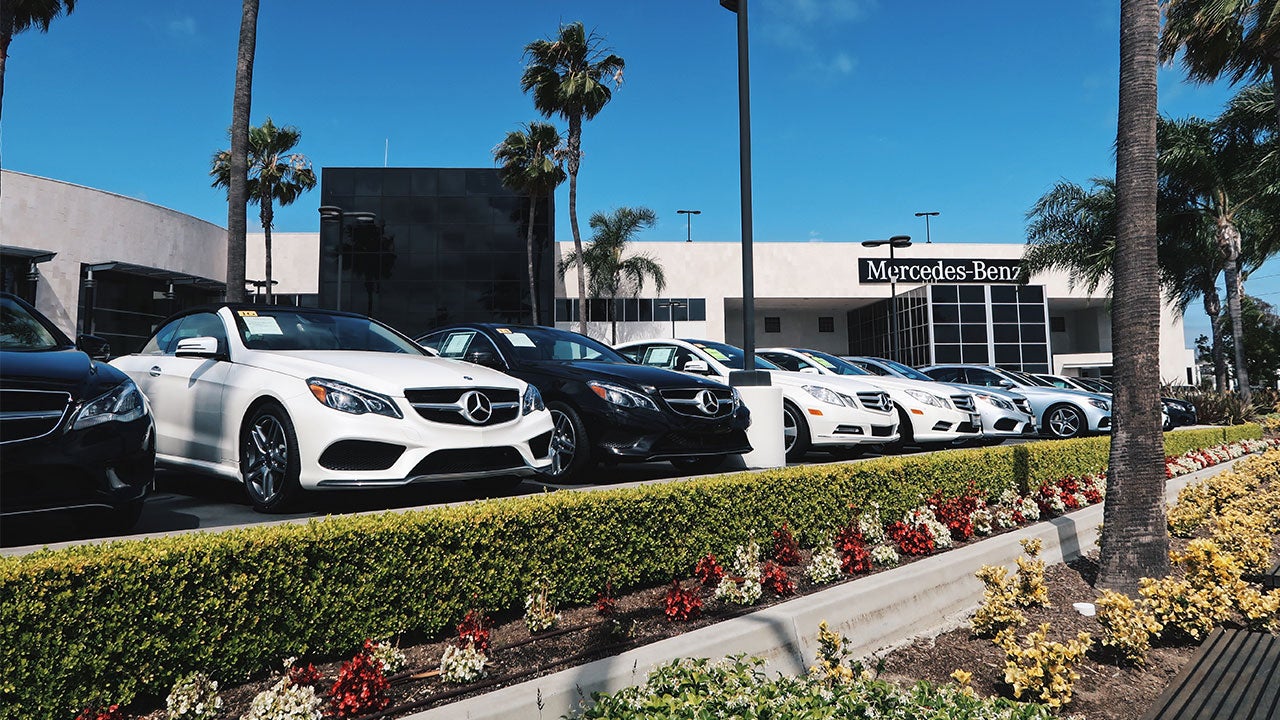Dealer add-ons: When they’re worth it and when to say no

Key takeaways
- To ensure you remain within your expected budget, it is usually best to avoid funding dealer add-ons with your loan, as you will pay additional interest.
- Outside of turning down vehicle add-ons, you can negotiate pricing individually if you are interested in one service but not all of them.
- Keep track of any documents related to the purchase of your vehicle to protect yourself from dealers adding extras without your permission.
Dealer add-ons often convince buyers to spend more than intended. And you’ll pay interest on any add-ons included in your auto loan. With this in mind, consider carefully before moving forward with these added features. They’re often unnecessary or available elsewhere for cheaper. You can figure out how much you’d actually be paying with an auto loan calculator.
Even more important, while you may be presented with many choices of packages, you can decline them all. You also can negotiate these car services individually if you want just one. And later, you can cancel any services if you don’t want them.
1. Gap insurance
Gap insurance pays the difference between what you owe and what your car is worth. If your car is totaled or stolen, gap insurance can help you break even on costs. It is a smart buy if you are leasing a car — if it’s not already included in the lease agreement.
Gap insurance might also be worth the cost if you get a car loan for more than the car is worth, which can happen when the remainder of your previous car loan is rolled into the new car payment. Still, it’s best to research and compare the cost of gap insurance through other sources first to know if the dealership is offering you the best price.
Banks, credit unions and third-party sellers all offer gap insurance. You never need to purchase gap insurance from a dealer, and if you find a better deal elsewhere, you’ll have the protection without dealer markup.
2. VIN etching
VIN etching is a procedure that allows you to make an adhesive plastic stencil containing your car’s vehicle identification number (VIN). You then place that stencil on a window and apply a special acid solution that chemically burns, or etches, the number onto the glass.
VIN etching can deter thieves because it makes it nearly impossible for them to profit from selling windows and windshields and makes it more difficult to find a way to dispose of a car once it has been stolen. In fact, it’s recommended by police and auto insurance agencies. Some insurers will even offer a discount on the comprehensive portion of your car insurance or waive your insurance deductibles if your car has the feature.
But you can do it yourself and save some money. It’s a straightforward process, but VIN etching as a dealer option can cost the car buyer between $200 and $300. If you do it yourself, you can shave off over $150.
3. Extended warranties
Extended warranties kick in after the manufacturer’s warranty expires but typically cover less. They offer bumper-to-bumper protection, covering everything on your car, including major system repairs, heating or air issues and engine problems. However, extended warranties do not cover components commonly replaced in routine maintenance..
Plan prices vary by mileage, the term of coverage and the deductible level. Before buying, consider whether the extended warranty is worth it. They are often more expensive than the most common repairs, especially when combined with your auto loan. As a dealer option, basic extended warranty policies can start at $1,000 and climb to several thousand dollars for luxury and high-performance cars.
Check Kelley Blue Book and Edmunds for expected repair costs and compare them to the extended warranty offered by the dealer. If you could reasonably save for repairs while you own the vehicle, an extended warranty will be an unnecessary expense.
4. Tire and wheel protection
Tires can be very expensive. Dealers offer tire and wheel protection to cover the cost of replacing the tires and rims if potholes, nails or curbs damage them, but most tires carry their own warranty. If issues arise, you will likely still be able to afford replacements without tire and wheel protection.
5. Paint and fabric protection
This add-on is exactly what it sounds like: an extra coating that dealers can add to your vehicle’s interior and exterior to protect it from damage. Some manufacturers include this with new car models, so check before double-dipping on this add-on. Protective paint sealant can cost the new car buyer well over $400. You might also see paint and fabric protection bundled together.
“A lot of dealers will also eagerly pitch you fabric protection, which is basically a spray that they will put on — a spray that costs them almost nothing, but for which they might then charge you $100 or more,” says Mike Quincy, automotive writer at the Consumer Reports Auto Test Center in Colchester, Connecticut.
6. Key protection
Depending on your car’s key and fob types, replacing either or both can get pricey. However, the additional cost of key protection may be more expensive than replacing the key on your own.
If you opt for key protection, compare the dealer add-on to options your insurance offers. You also can invest in technology like Tile to help you find your key if misplaced.
7. Credit insurance
This add-on helps you make payments on your auto loan if you cannot. It only activates in certain situations — like death, disability or unemployment. You aren’t required to buy credit insurance to finance or purchase a car, so don’t let salespeople pressure you.
Credit insurance can seem useful in an emergency, but it may be more expensive than building an emergency fund. Also, you may be able to find credit insurance through a third party at a lower rate. In some cases, the insurance you already have may be enough to cover your expenses without additional cost.
8. Rustproofing and undercoating
Dealer-applied undercoating can cost as much as $1,000 or as little as $550. It depends on the car, the type of treatment package — basic or premium — and whether it includes extra options like sound-deadening. It can be sold to new car buyers as a separate dealer option or be included in a pricey bundle called an “environmental protection package.” These packages may also include paint sealant and fabric protection.
“Cars leaving the factories today all have excellent rustproofing,” says Quincy. “[Dealers] have an incentive to do it because there’s a fair amount of markup they can get on these services.”
9. Nitrogen in your tires
No matter what your tires are filled with, nitrogen or oxygen, the four wheels pushing your vehicle along will inevitably deflate. Tires can lose air due to a hole in the tread, a poor seal or just general vehicle wear and tear. But many dealers will encourage buyers to add nitrogen to their tires, which can cost up to $400, claiming it will keep your tire pressure from fluctuating.
Unless you are a race car driver needing more consistent pressure from your tires, the additional cost is not worth it. Plus, the air they provide may have no more nitrogen than the air you’re breathing. If you really want nitrogen, stopping by a local body shop will cost you $5 to $10 per tire.
Remember: You can say no
Dealers often offer add-ons as a package rather than stand-alone items. This strategy — designed to sell more items — is often presented as a “protection package.” It’s usually offered in levels like bronze, silver and gold.
Known as “menu selling,” this approach makes it easier for the dealership to ensure the salesperson presents all the extra items or services the dealership offers. The strategy may make the customer feel as if these packages are not optional, even if they are.
Remember that any add-on you decide to add to your loan will cost interest. Keeping the added cost in mind may help you stay firm when negotiating your car purchase.
My auto financing added extras I don’t want — can I have them taken off?
Since each add-on service listed above is optional, you should be able to cancel them under most circumstances.
1. Ask for add-ons to be removed: If you find that a new vehicle has some dealer-added options, you can ask the dealer to remove them and adjust the vehicle’s sales price accordingly. In some cases, it may not be possible — for example, if rustproofing or paint protection has already been applied, it may not be removable.
2. Negotiate the price: Try to negotiate the price of the vehicle like you normally would if the dealer can’t or won’t get rid of an option. Again, there’s no guarantee that this will work, but even showing a little initiative in negotiation can change the course of the conversation.
3. Check the contracts you signed. Review the time limits and cancelation procedures. You may have to mail or fax documentation to receive a refund or rebate.
4. Skip the dealership if you can. Instead, go directly to the service company and cancel with them directly. This is the best route if it’s been more than a few days since you bought your car.
5. Keep notes and documents on the process. Canceling add-ons can be complicated and annoying, so write everything down as you complete each step.
6. Stay on top of the money. It may take weeks for your refund or rebate check to come in. If it doesn’t, follow up and ask when to expect the contract to be canceled and refunded.
If you financed any add-ons through your loan, you might not be able to receive a refund on the interest you already paid. However, you can take the add-on off your loan and get a rebate on the amount you haven’t yet paid.
Bottom line
Vehicle purchases come with a laundry list of additional costs, adding up to a higher number than advertised on the vehicle window. But a savvy buyer can avoid many extra charges by refusing pricey, optional add-ons. While dealers aren’t always willing to remove options they have installed or negotiate on the price, know that these options aren’t standard.
You don’t have to accept them. Only purchase add-ons that are worth your while, and don’t spend more than you intend. As with every other aspect of the car-buying process, shop around and compare prices and options from multiple dealers in your area to ensure you get the best deal available.
You may also like

What is a fixture in real estate?


0% APR car deals: Are they worth it?



